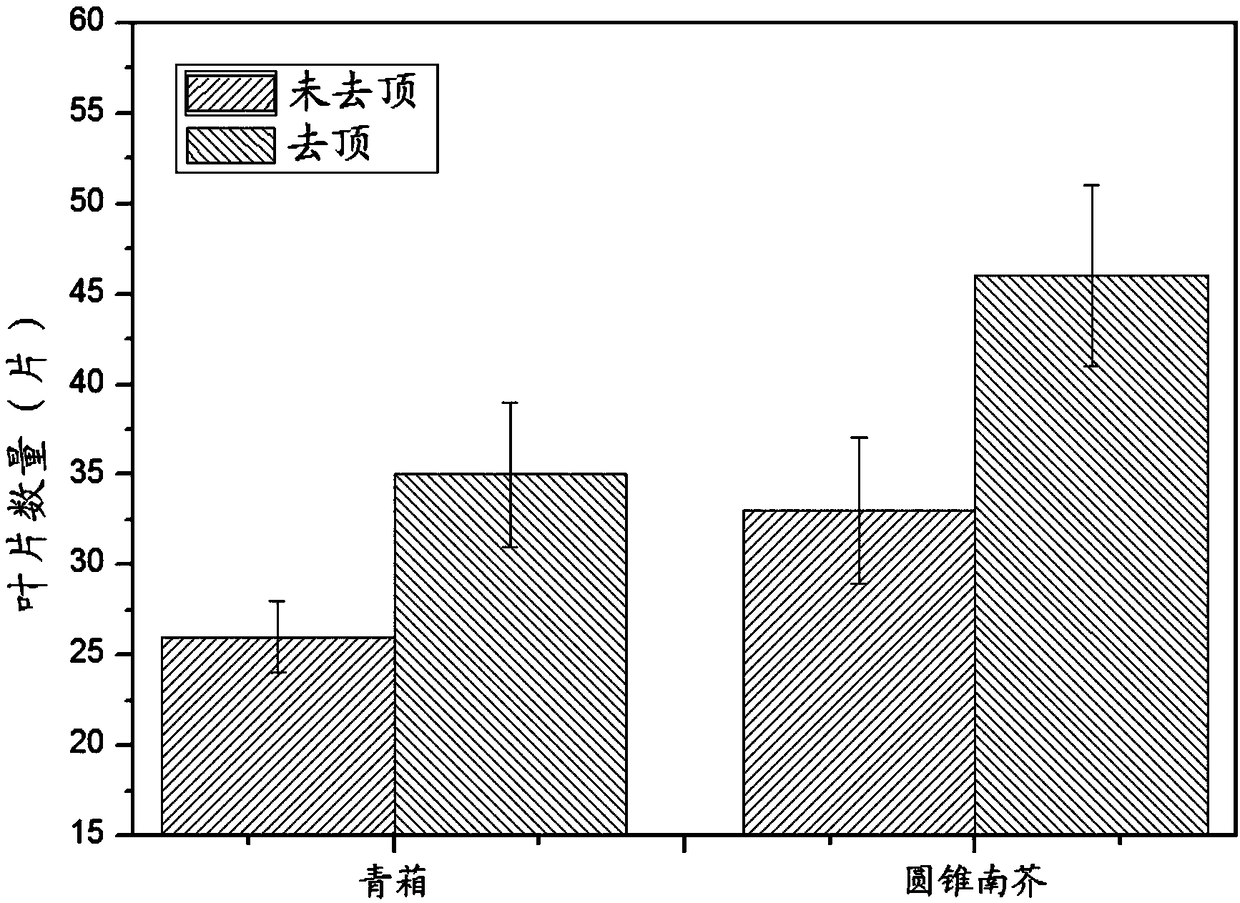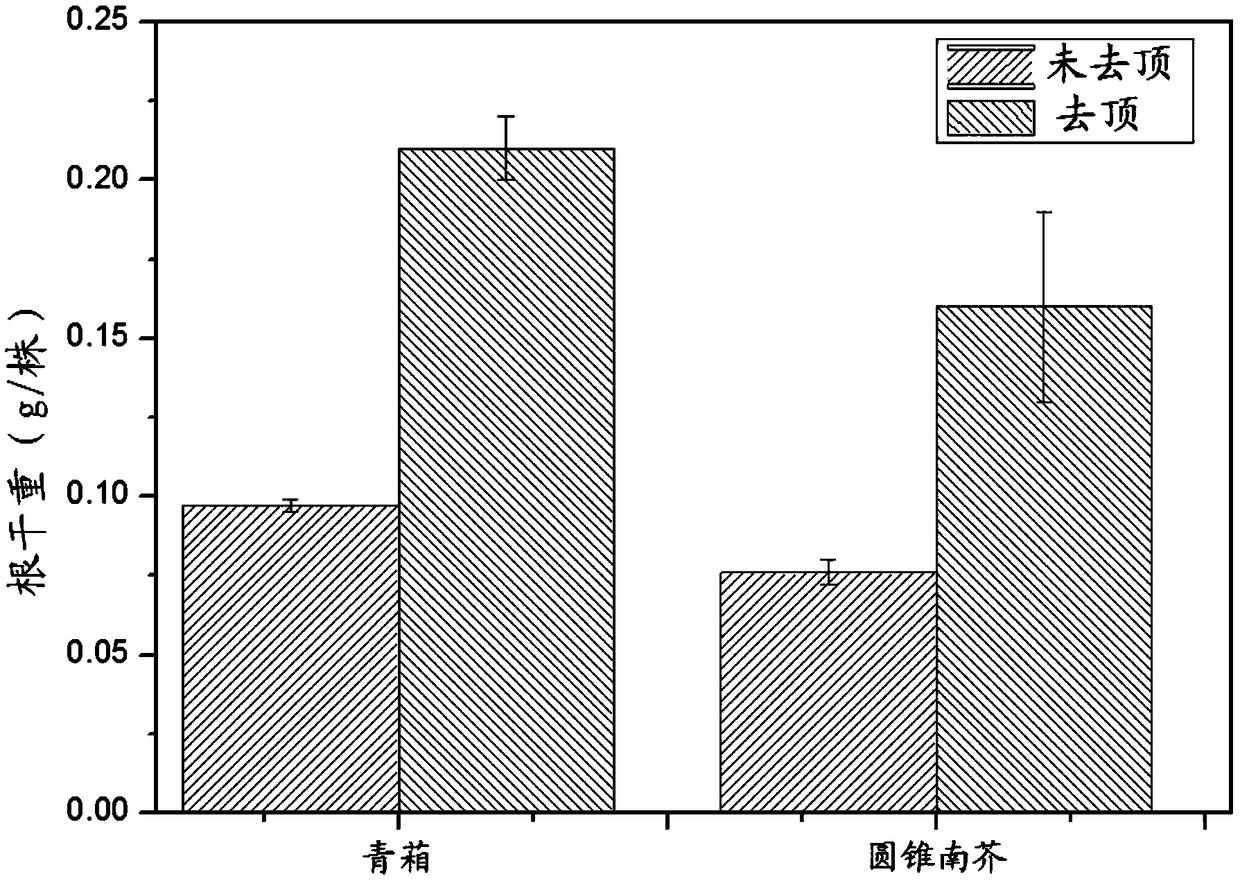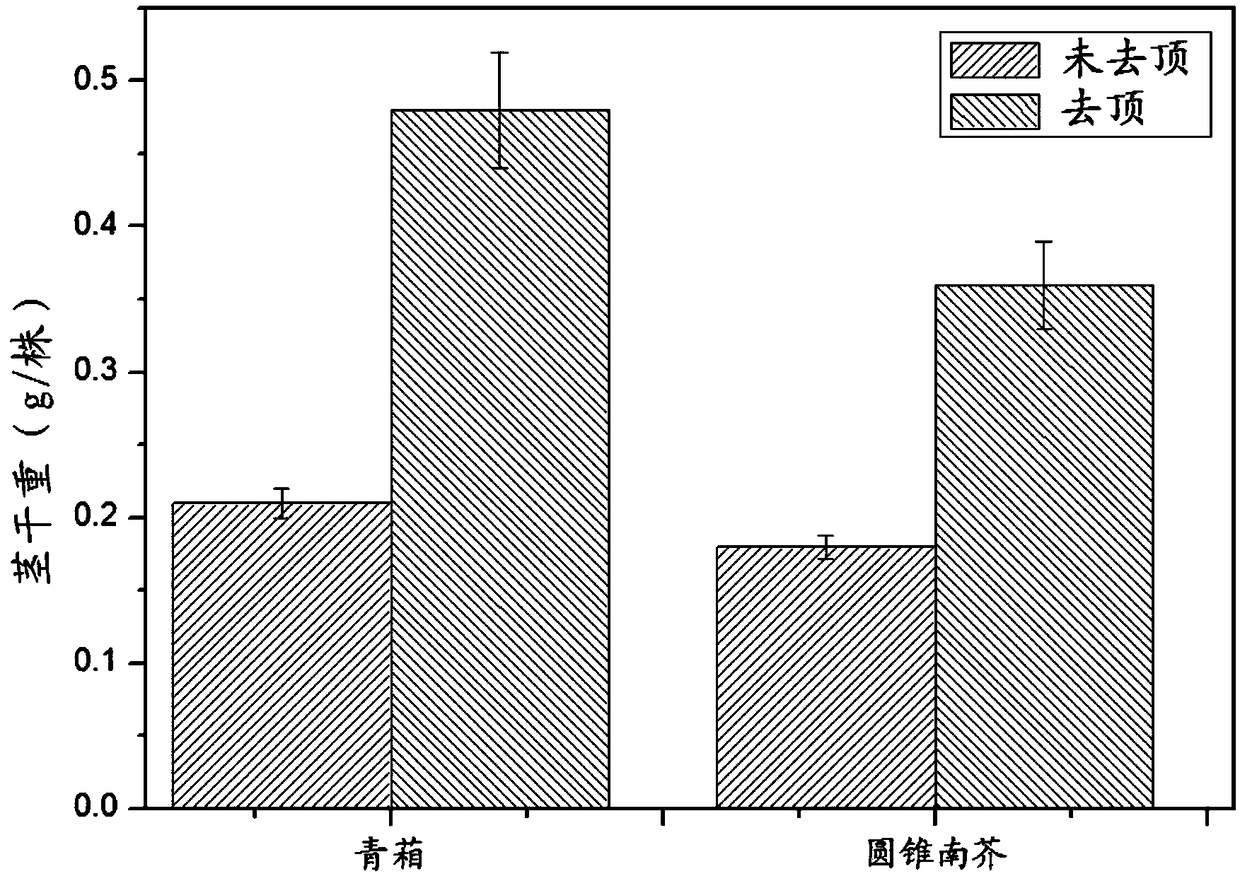Phytoremediation method for treating cadmium, manganese and chromium compound polluted soil
A compound pollution and phytoremediation technology, which is applied in the field of phytoremediation to control cadmium, manganese and chromium compound polluted soil, can solve the problems that cannot meet the requirements of heavy metal pollution control, and achieve the effect of improving phytoremediation effect, increasing heavy metal content, and strengthening effect
- Summary
- Abstract
- Description
- Claims
- Application Information
AI Technical Summary
Problems solved by technology
Method used
Image
Examples
Embodiment 1
[0035] A phytoremediation method for controlling cadmium-manganese-chromium composite polluted soil, comprising the following steps:
[0036] (1) In a vegetable field around a mining area in Guangdong, a 2m×4m plot was used for restoration; after the weeds were cleared, biochar was added to the cadmium, manganese, and chromium compound polluted soil, and the amount of biochar applied was cadmium, manganese, and chromium compound pollution 3% of the soil quality, the raw material of the biochar is pine bark and peanut shells with a mass ratio of 2:1;
[0037] (2) Select plump wild Celosia argentea Linn (Celosia argentea Linn) seeds and sow them evenly in seedling trays filled with sand grains, cultivate between 20°C and 35°C, water every day to keep them moist, and you can get Celosia argentea Linn in a week Seedlings; seeds of Arabis Paniculata (Arabis Paniculata) were soaked for 5 hours, placed in a dark place to germinate for 4 days, and raised in the normal soil of the gree...
Embodiment 2
[0042] A phytoremediation method for controlling cadmium-manganese-chromium composite polluted soil, comprising the following steps:
[0043] (1) In a vegetable field around a mining area in Guangdong, a 2m×4m plot was used for restoration; after the weeds were cleared, biochar was added to the cadmium, manganese, and chromium compound polluted soil, and the amount of biochar applied was cadmium, manganese, and chromium compound pollution 3% of the soil quality, the raw material of the biochar is pine bark and peanut shells with a mass ratio of 2:1;
[0044] (2) Select plump wild Celosia argentea Linn (Celosia argentea Linn) seeds and sow them evenly in seedling trays filled with sand grains, cultivate between 20°C and 35°C, water every day to keep them moist, and you can get Celosia argentea Linn in a week Seedlings; seeds of Arabis Paniculata (Arabis Paniculata) were soaked for 5 hours, placed in a dark place to germinate for 4 days, and raised in the normal soil of the greenh...
Embodiment 3
[0049] A phytoremediation method for controlling cadmium-manganese-chromium composite polluted soil, comprising the following steps:
[0050] (1) In a vegetable field around a mining area in Guangdong, a 2m×4m plot was used for restoration; after the weeds were cleared, biochar was added to the cadmium, manganese, and chromium compound polluted soil, and the amount of biochar applied was cadmium, manganese, and chromium compound pollution 3% of the soil quality, the raw material of the biochar is pine bark and peanut shells with a mass ratio of 2:1;
[0051] (2) Select plump wild Celosia argentea Linn (Celosia argentea Linn) seeds and sow them evenly in seedling trays filled with sand grains, cultivate between 20°C and 35°C, water every day to keep them moist, and you can get Celosia argentea Linn in a week Seedlings; seeds of Arabis Paniculata (Arabis Paniculata) were soaked for 5 hours, placed in a dark place to germinate for 4 days, and raised in the normal soil of the gree...
PUM
 Login to View More
Login to View More Abstract
Description
Claims
Application Information
 Login to View More
Login to View More - R&D
- Intellectual Property
- Life Sciences
- Materials
- Tech Scout
- Unparalleled Data Quality
- Higher Quality Content
- 60% Fewer Hallucinations
Browse by: Latest US Patents, China's latest patents, Technical Efficacy Thesaurus, Application Domain, Technology Topic, Popular Technical Reports.
© 2025 PatSnap. All rights reserved.Legal|Privacy policy|Modern Slavery Act Transparency Statement|Sitemap|About US| Contact US: help@patsnap.com



